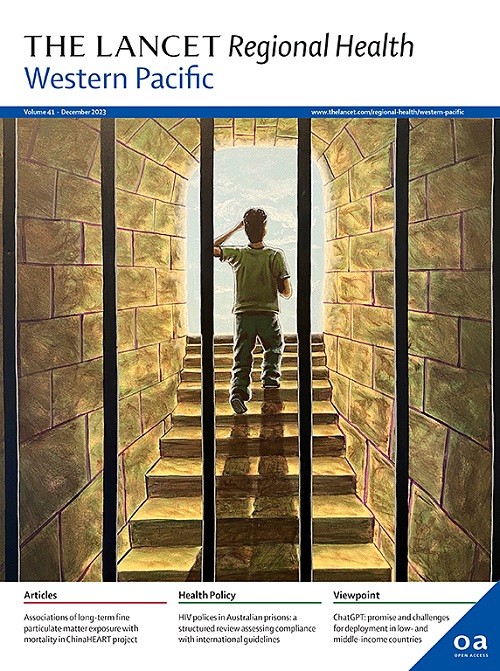Baseline T2-based all-in-one automated deep learning management system for neoadjuvant therapy efficacy and prognosis in locally advanced rectal cancer
IF 7.6
1区 医学
Q1 HEALTH CARE SCIENCES & SERVICES
引用次数: 0
Abstract
Background
Current methods for assessing the efficacy of neoadjuvant therapy and predicting patient survival and recurrence risk in locally advanced rectal cancer prior to treatment are limited. This study aimed to develop a multi-module automated deep learning system to evaluate the pathological complete response (pCR) and prognosis of neoadjuvant therapy in patients at baseline.
Methods
This multicenter study retrospectively included T2-weighted images from a total of 354 patients with pathologically confirmed locally advanced rectal cancer who received neoadjuvant therapy from 2018 to 2022. The long-term prognosis of patients was also recorded, including overall survival (OS) and disease-free survival (DFS). Center I contained 227 patients as the development cohort, and centers II and III contained 72 and 55 patients as the external test cohorts, respectively. Lesion delineation was performed manually by a radiologist with ten years of experience. Image preprocessing, including N4 bias field correction, resampling, and image normalization, was performed prior to analysis. The study consisted of four main modules; first, an advanced 3D-SwinUNETR segmentation module was constructed and trained using a development cohort. After 15000 iterations, the best model is saved and the corresponding prediction mask is generated. Second, based on the generated prediction masks, three different analysis modules are used. First, a 3D-ResNet-152 model is constructed and trained with the development cohort to predict pCR for patients. Second, based on the 3D-ResNet-152 model framework, quantitative deep features (QDLs) were extracted, and a prediction model was constructed to evaluate pCR through a feature screening method. Third, radiomics features (RFs) are extracted, and a predictive model is constructed to evaluate pCR through feature screening methods. Finally, a fusion model was constructed based on the three modules to assess neoadjuvant therapy efficacy, OS, and DFS. Dice similarity coefficients (DSC) was used to evaluate the segmentation model, Area under the receiver operating characteristic curve (AUC) was used to assess the predictive performance of neoadjuvant efficacy, Kaplan Meier was used for DFS and OS analysis, and Log-rank was used to test for statistical differences.
Findings
In the segmentation module, the DSC for the two external cohorts was 0.703±0.020 and 0.698±0.025, respectively. The fusion model demonstrated the best efficacy for assessing pCR, achieving AUCs of 0.756 and 0.751. Log-rank analysis indicated the fusion model's effectiveness in risk-stratifying OS, with p-values of 0.033 and 0.023, and suggested potential stratification for DFS, with p-values of 0.068 and 0.044.
Interpretation
This deep learning-based approach can effectively assess the neoadjuvant therapy efficacy and long-term prognosis at baseline.
基于基线t2一体化自动化深度学习管理系统对局部晚期直肠癌新辅助治疗疗效及预后的影响
目前评估局部晚期直肠癌治疗前新辅助治疗效果、预测患者生存和复发风险的方法是有限的。本研究旨在开发一个多模块的自动深度学习系统来评估患者在基线时新辅助治疗的病理完全缓解(pCR)和预后。方法回顾性分析2018年至2022年接受新辅助治疗的354例经病理证实的局部晚期直肠癌患者的t2加权图像。同时记录患者的长期预后,包括总生存期(OS)和无病生存期(DFS)。中心I纳入227例患者作为发展队列,中心II和中心III分别纳入72例和55例患者作为外部试验队列。病变的划定是由一个有十年经验的放射科医生手工完成的。在分析之前进行图像预处理,包括N4偏置场校正、重采样和图像归一化。该研究包括四个主要模块;首先,构建了先进的3D-SwinUNETR分割模块,并使用开发队列进行了训练。经过15000次迭代后,保存最佳模型并生成相应的预测掩码。其次,根据生成的预测掩码,使用三种不同的分析模块。首先,构建3D-ResNet-152模型,并与发展队列进行训练,以预测患者的pCR。其次,基于3D-ResNet-152模型框架,提取定量深度特征(quantitative deep features, qdl),并通过特征筛选方法构建预测模型对pCR进行评价。第三,提取放射组学特征(radiomics features, RFs),并通过特征筛选方法构建预测模型对pCR进行评价。最后,基于三个模块构建融合模型,评估新辅助治疗的疗效、OS和DFS。采用Dice similarity coefficients (DSC)评价分割模型,采用Area under the receiver operating characteristic curve (AUC)评价新辅助疗效的预测性能,采用Kaplan Meier进行DFS和OS分析,采用Log-rank检验有无统计学差异。在分割模块中,两个外部队列的DSC分别为0.703±0.020和0.698±0.025。融合模型对pCR的评估效果最好,auc分别为0.756和0.751。Log-rank分析显示融合模型在风险分层OS方面的有效性,p值分别为0.033和0.023,并提示对DFS进行潜在分层,p值分别为0.068和0.044。这种基于深度学习的方法可以有效地评估新辅助治疗的疗效和基线的长期预后。
本文章由计算机程序翻译,如有差异,请以英文原文为准。
求助全文
约1分钟内获得全文
求助全文
来源期刊

The Lancet Regional Health: Western Pacific
Medicine-Pediatrics, Perinatology and Child Health
CiteScore
8.80
自引率
2.80%
发文量
305
审稿时长
11 weeks
期刊介绍:
The Lancet Regional Health – Western Pacific, a gold open access journal, is an integral part of The Lancet's global initiative advocating for healthcare quality and access worldwide. It aims to advance clinical practice and health policy in the Western Pacific region, contributing to enhanced health outcomes. The journal publishes high-quality original research shedding light on clinical practice and health policy in the region. It also includes reviews, commentaries, and opinion pieces covering diverse regional health topics, such as infectious diseases, non-communicable diseases, child and adolescent health, maternal and reproductive health, aging health, mental health, the health workforce and systems, and health policy.
 求助内容:
求助内容: 应助结果提醒方式:
应助结果提醒方式:


